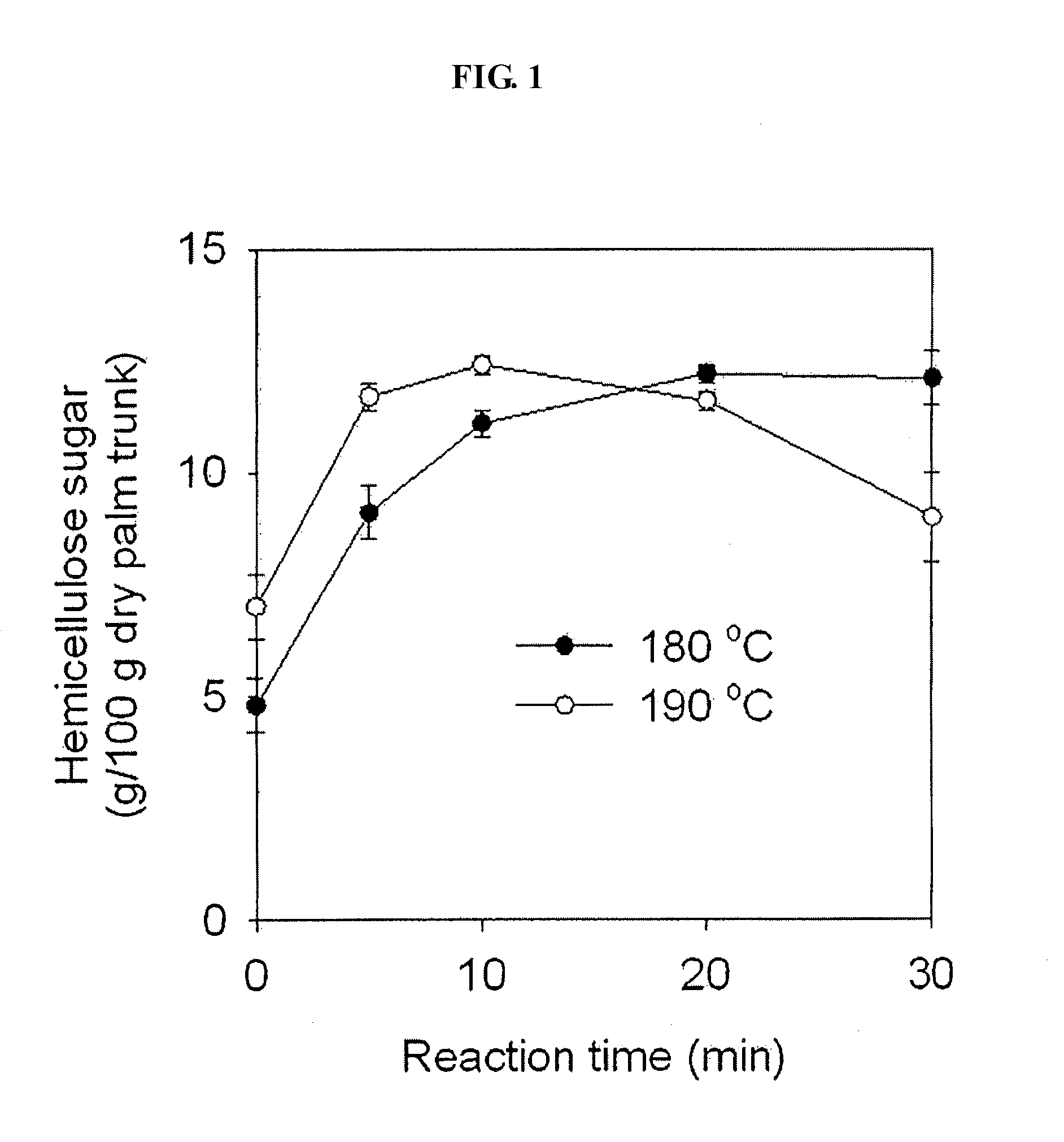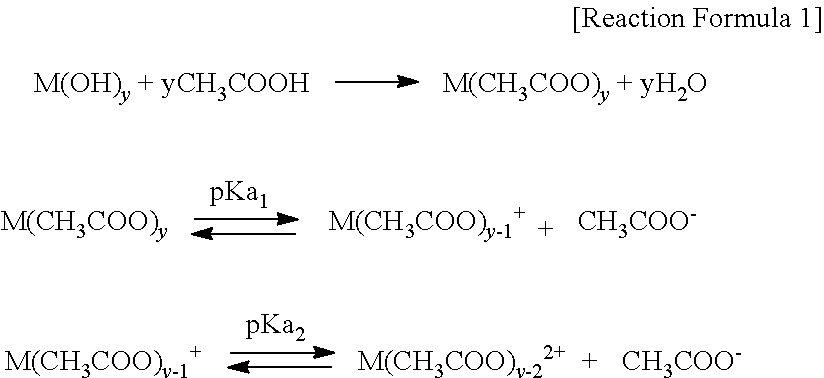Method for preparing sugar, bioethanol or microbial metabolite from lignocellulosic biomass
- Summary
- Abstract
- Description
- Claims
- Application Information
AI Technical Summary
Benefits of technology
Problems solved by technology
Method used
Image
Examples
example 1
Production of Fermentable Sugar Using Sunflower Stalks as a Raw Material
[0233]Sunflower stalks powder of a known ingredient composition was weighed at 360 g of dry weight and put into a cotton cloth bag, and the cotton cloth bag was put into a 95° C. steamer containing 3,600 g distilled water and heated for 10 minutes. Subsequently, the cotton cloth bag was put into a centrifugal dehydrator to dehydrate it. After dehydration, the cotton cloth bag was put into a 95° C. steamer containing 2,400 g distilled water to be allowed to absorb enough water, and after removed, was dehydrated by a centrifugal dehydrator. The contents in the cotton cloth bag were divided into three and put into a 2 L reactor (Parr reactor; Parr Instrument Co. Ltd., USA) jar, and distilled water was added so that the contents weighed 1,500 g respectively. Liquid hot water pretreatment was performed by heating the reactor at 190° C. for 5 minutes. After the reaction finished, the reactor jar was cooled quickly by ...
example 2
Production of Fermentable Sugar Using Sunflower Stalks as a Raw Material
[0257]Sunflower stalks powder of a known ingredient composition was weighed at 120 g of dry weight on a scale and put into a 2 L high pressure reactor (Parr reactor; Parr Instrument Co. Ltd., USA) jar, and distilled water was added so that the contents weighed 1,500 g. Liquid hot water pretreatment was performed at 190° C. for 5 minutes. After the reaction finished, the reactor jar was cooled quickly by dipping it in running water, and the pretreatment product were transferred to a cotton cloth bag. It was put into a centrifugal dehydrator (Chalsney®, Hanil Electric, Republic of Korea) to conduct dehydration for 30 minutes. The dehydrated solid in the cotton cloth bag was put into a plastic bag which was then sealed, and was put into an autoclave set to temperature: 90° C. and time: 30 minutes. 2.04 g calcium hydroxide was put into a beaker (5 L) which 1,200 ml distilled water was added to, it was put into a 90°...
example 3
Production of Fermentable Sugar Using Reed as a Raw Material
[0258]The powdered Korean native reed of a known ingredient composition was weighed at 150 g of dry weight and put into a 2 L high pressure reactor (Parr reactor; Parr Instrument Co. Ltd., USA) jar, and distilled water was added so that the contents weighed 1,500 g. Liquid hot water pretreatment was performed at 200° C. for 10 minutes by heating the reactor. After the reaction finished, the reactor jar was cooled quickly by dipping it in running water, and the pretreatment product was transferred to a cotton cloth bag. It was put into a centrifugal dehydrator (Chalsney®, Hanil Electric, Republic of Korea) to conduct dehydration for 30 minutes. The dehydrated solid in the cotton cloth bag was put into a plastic bag which was then sealed, and was put into an autoclave set to temperature: 90° C. and time: 30 minutes. 5.56 g calcium hydroxide was put into a constant temperature water bath (10 L, Daihan Scientific, Republic of K...
PUM
| Property | Measurement | Unit |
|---|---|---|
| Temperature | aaaaa | aaaaa |
| Temperature | aaaaa | aaaaa |
| Temperature | aaaaa | aaaaa |
Abstract
Description
Claims
Application Information
 Login to View More
Login to View More - R&D
- Intellectual Property
- Life Sciences
- Materials
- Tech Scout
- Unparalleled Data Quality
- Higher Quality Content
- 60% Fewer Hallucinations
Browse by: Latest US Patents, China's latest patents, Technical Efficacy Thesaurus, Application Domain, Technology Topic, Popular Technical Reports.
© 2025 PatSnap. All rights reserved.Legal|Privacy policy|Modern Slavery Act Transparency Statement|Sitemap|About US| Contact US: help@patsnap.com


